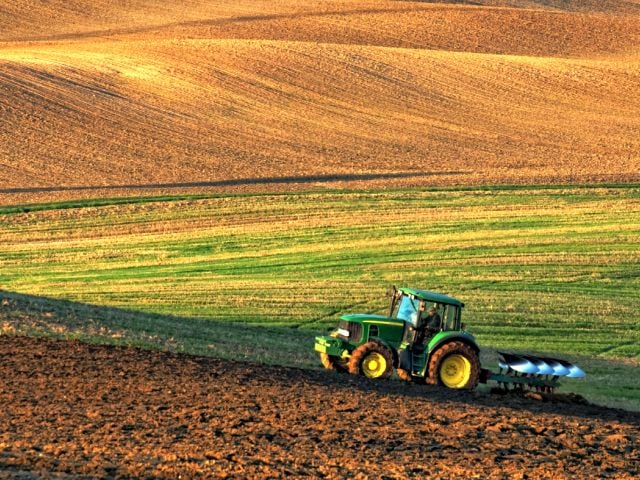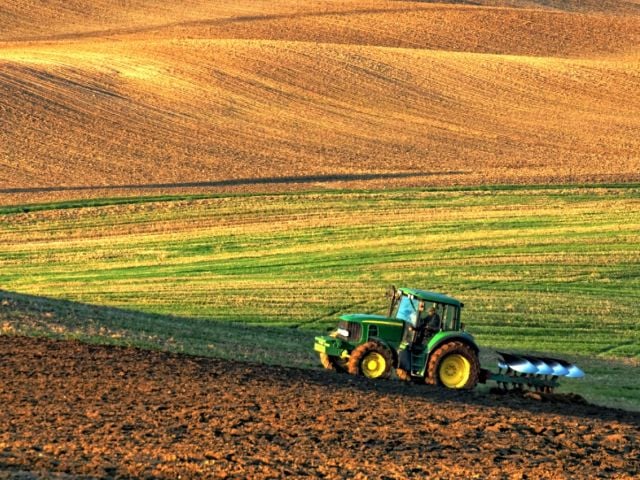EWG Senior Vice President for Government Affairs Scott Faber delivered the following remarks before the American Enterprise Institute on Tuesday, April 12, 2022.
Even if we stopped burning fossil fuels today, expected greenhouse gas emissions from food and agriculture could make a climate catastrophe unavoidable.
Agriculture already accounts for at least 10 percent of U.S. greenhouse gas emissions – and these emissions are growing. So, we must reward farmers when they offer to take steps to reduce these emissions, especially nitrous oxide emissions from fertilizer and methane emissions from farm animals and their manure. But two-thirds of the farmers offering to change how they farm to reduce these emissions are being turned away by the USDA.
Why? Because of misplaced spending priorities.
First, the lion’s share of federal farm spending flows in the form of income subsidies, and the lion’s share of these subsidies flows to the largest and most successful farmers. Second, the lion’s share of USDA conservation funding flows to conservation practices that do little or nothing to reduce greenhouse gas emissions, and the lion’s share of funding for land set-aside programs is wasted on short-term contracts.
In fact, some of the conservation practices funded by USDA actually increase greenhouse gas emissions.
So we must not only increase conservation spending to help farmers reduce emissions, we must also ensure that conservation spending flows to the practices and enhancements that actually reduce these emissions. What’s more, we must reduce future enrollment of productive farmland into land set-aside programs and instead focus future enrollment on long-term and permanent easements on risky marginal lands, like frequently flooded lands in river corridors.
But we also need to be honest: Incentives alone will not be enough to meaningfully reduce greenhouse gas emissions from farming. Betting the future of the planet on incentives, no matter how generous, would be a mistake.
We must also reform our farm subsidy programs to send the right price signals to farmers to change not only how farmers grow their crops and raise their animals but also which crops farmers grow and where, what farmers choose to feed their animals, and how they choose to manage their animal manure.
We need to do more than encourage farmers to adopt climate-smart farm practices.
We also need to adopt climate-smart farm subsidy policies that do more than protect farmers from the ups and downs of agriculture.
We need climate-smart farm subsidy policies that protect all of us, including our farmers, from the extreme weather caused by climate change. Because it’s the taxpayers, not just our farmers, who may also get soaked if our policies continue to underwrite risky decision-making.
It’s not just farmers who need to change what they feed their animals.
Consumers need to change what we choose to eat as well. If protein demand grows as much as expected, and most of that demand is met with animal proteins, we will blow right past the goals we have set for the climate.
We simply must make it easier for the vast majority of us who eat meat and will continue to eat meat to reduce our protein consumption and occasionally replace an animal protein with a plant-based option that requires less land and less nitrogen, and produces a lot less methane. Shifting our diets to eat healthier amounts of protein offers the best chance for consumers to do their part, according to the most recent IPCC report.
Finally, we must speak plainly.
Farmers have a lot to lose from the extreme weather caused by climate change but, thanks to a generous combination of commodity, crop insurance and disaster subsidies, no industry is better protected from weather-related risks than agriculture.
The far greater risk to our farmers is reputational.
Right now, every sector of the economy is reducing their emissions but one – agriculture.
And, based on current trends, food and farming emissions, now 10 to 15 percent of U.S. emissions, could easily account for 20 percent by the end of this decade, and 30 percent by the end of the next decade.
That’s not just bad for the climate. That’s bad for business.
What’s good for business – for our farmers, for food companies, and (by the way) for our health and the health of the planet – is scaling up plant-based protein choices.
Right now, the U.S. is the world’s global leader in plant-based proteins. We are a center for innovation, supporting more than 50,000 jobs. One study estimates we could add 200,000 more jobs by the end of the decade.
Paying our workers to turn plants – which our farmers grow – into proteins that people all around the world can choose to eat – THAT is good for business.
Of course, other countries see the rising number of “flexitarians” and are making big investments.
Just last week, Denmark announced a plan to spend nearly $200 million to scale up plant-based foods. Other countries are also making big investments, including China, Canada, Israel, Sweden, Singapore, the Netherlands, Australia, the EU and the U.K.
We could easily lose our place as the global leader – just as we have with wind and solar.
As the IPCC co-chair said last week, “it’s now or never, if we want to limit global warming to 1.5 degrees Celsius. Without immediate and deep emissions reductions across all sectors, it will be impossible.”
Yes, we need to reward farmers when they take steps to reduce emissions and yes, we need to stop wasting precious conservation funds on practices that don’t work. But we also need to send the right price signals to our farmers and ranchers if we want to meaningfully reduce nitrous oxide and methane emissions, and we need to invest in plant-based protein options that help consumers choose to reduce the carbon footprint of their food



